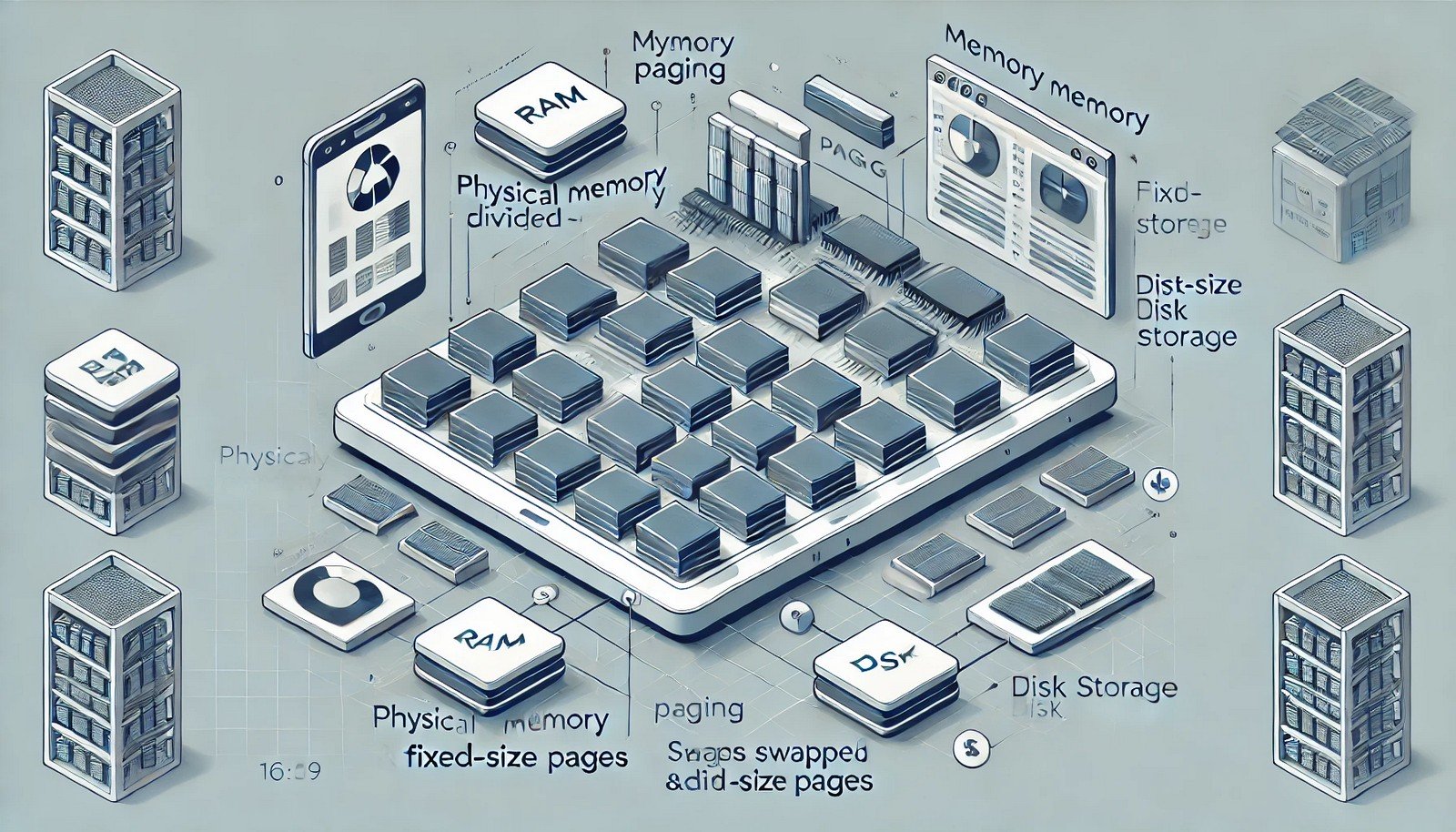Memory Paging
 (Representational Image | Source: Dall-E)
(Representational Image | Source: Dall-E)
Quick Navigation:
- Memory Paging Definition
- Memory Paging Explained Easy
- Memory Paging Origin
- Memory Paging Etymology
- Memory Paging Usage Trends
- Memory Paging Usage
- Memory Paging Examples in Context
- Memory Paging FAQ
- Memory Paging Related Words
Memory Paging Definition
Memory paging is a memory management scheme that eliminates the need for contiguous allocation of physical memory. In this method, the operating system divides physical memory into fixed-size blocks called "pages." When a process needs to be executed, it is divided into pages and loaded into available frames in physical memory. This allows efficient use of memory, reduces fragmentation, and enables processes to use more memory than what is physically available by swapping pages in and out from disk.
Memory Paging Explained Easy
Imagine your computer’s memory is like a big bookshelf, but you only have a few shelves. You want to read lots of books (programs), but not all of them fit on the shelves at once. So, you keep some books on the table (disk storage) and swap them in and out of the shelves (memory) as needed. That’s how memory paging works — it makes sure the most important "books" are always within reach while keeping the rest nearby.
Memory Paging Origin
The concept of memory paging originated in the mid-20th century as a solution for managing limited physical memory. It became widely used with the development of time-sharing operating systems in the 1960s and 1970s. Early computers like the Atlas pioneered this method to improve memory utilization and support multiple concurrent processes.
Memory Paging Etymology
The term "paging" refers to dividing memory into fixed-size blocks called "pages," with each page acting as a manageable unit for memory allocation.
Memory Paging Usage Trends
Memory paging has evolved with modern computing. As applications have grown larger and more complex, paging systems have become more sophisticated. Techniques such as demand paging, virtual memory, and page replacement algorithms are now crucial in managing system performance and preventing memory shortages. Paging remains central to the functioning of operating systems like Linux, Windows, and macOS.
Memory Paging Usage
- Formal/Technical Tagging:
- Operating Systems
- Virtual Memory Management
- Page Replacement Algorithms - Typical Collocations:
- "memory paging algorithm"
- "virtual memory paging"
- "page fault handling"
- "demand paging system"
Memory Paging Examples in Context
- In virtual memory systems, memory paging allows processes to use more memory than physically available by swapping pages between RAM and disk storage.
- Modern operating systems like Windows and Linux rely on paging to manage memory efficiently and prevent crashes caused by low memory.
- Demand paging ensures only necessary pages are loaded into physical memory, improving system responsiveness.
Memory Paging FAQ
- What is memory paging?
Memory paging is a memory management technique that divides memory into fixed-size blocks called pages, allowing efficient memory allocation and usage. - How does memory paging differ from segmentation?
Paging divides memory into equal-sized blocks, while segmentation divides it into variable-sized segments based on logical divisions of a program. - What is a page fault?
A page fault occurs when a process accesses a page that is not currently in physical memory, requiring the operating system to retrieve it from disk. - Why is memory paging important?
Paging optimizes memory usage, reduces fragmentation, and enables processes to exceed physical memory limits through virtual memory. - How does demand paging work?
Demand paging loads pages into memory only when they are needed, improving memory efficiency and reducing initial load times. - What are common page replacement algorithms?
Common algorithms include Least Recently Used (LRU), First-In-First-Out (FIFO), and Optimal Page Replacement. - How does memory paging affect performance?
Proper paging management ensures smooth performance, while excessive page faults can slow down a system significantly. - What is the role of virtual memory in paging?
Virtual memory extends physical memory using disk space, allowing more applications to run concurrently through paging. - Can paging cause memory fragmentation?
Paging reduces external fragmentation but may cause internal fragmentation if page sizes do not match process requirements perfectly. - Which operating systems use memory paging?
All major operating systems, including Windows, Linux, and macOS, rely on memory paging for efficient memory management.
Memory Paging Related Words
- Categories/Topics:
- Operating System Design
- Virtual Memory
- Computer Architecture
Did you know?
The first computer to use virtual memory and paging was the Atlas, developed in the early 1960s at the University of Manchester. Its innovations laid the foundation for modern operating systems, making memory management more efficient and scalable.
PicDictionary.com is an online dictionary in pictures. If you have questions or suggestions, please reach out to us on WhatsApp or Twitter.Authors | Arjun Vishnu | @ArjunAndVishnu

I am Vishnu. I like AI, Linux, Single Board Computers, and Cloud Computing. I create the web & video content, and I also write for popular websites.
My younger brother, Arjun handles image & video editing. Together, we run a YouTube Channel that's focused on reviewing gadgets and explaining technology.



Comments powered by CComment